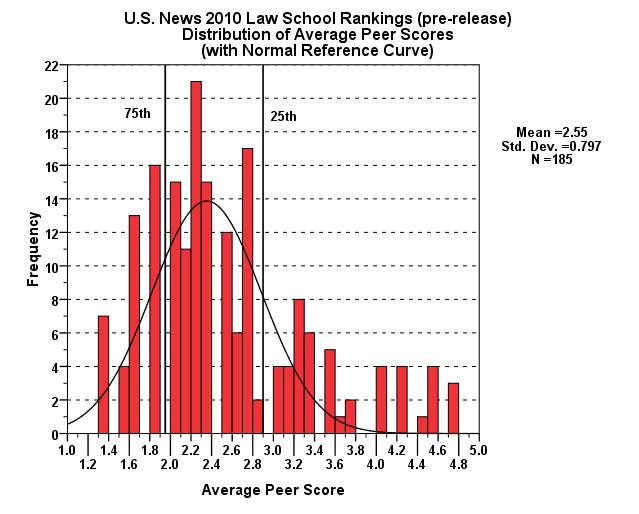Jeff Lipshaw has an interesting comment on the rankings game, Ambition and Rankings: “We Have Met the Enemy and He Is Us”. He begins by noting a WSJ article by Eric Felten, who is of the view that “the rankings are really about getting ahead.” He then notes an discussion with a colleague about the Big Law School game–moving up to more prestigious law schools. He continues
Yes, I think the rankings do have something to do with our subjective views of getting ahead, and I do think there’s something about the legal profession that makes OUR rankings so powerful. I used the phrase “progressing up the food chain” with my colleague, and in what industries or professions is the food chain as quantitative as the legal profession? * * *
* * *
… there’s a lot of self-selection in the process of becoming a lawyer, and even more in becoming a big law firm lawyer or a law professor. I suspect the first element of that self-selection is a particular orientation to progressing up the food chain…. There ain’t that much to distinguish us…. There are only dozens and not thousands of law schools. * * * In other words, it’s easy to see a well-defined food chain in the relatively small, homogeneous, and closed legal community.
Most of the blogging about law-school rankings focuses on the top law schools, and sometimes as far down as the top 100. Perhaps that’s because they are the only schools individually ranked, but I don’t think so. I’m not sure that professors at top law schools really care about what happens on the other side of the Great Divide in the legal academy (Tiers 3 and 4). If nothing else, the concerns of the lower-ranked schools are not the concerns of the elite.
For example, during the debate about ABA Interpretation 301-6 and minimum law-school Bar passage standards, the blawgosphere was largely (entirely?) silent. Was that because the elite law schools, and even the top 100, don’t worry about the Bar? Yes, the occasional Top 100 Dean gets toppled when Bar passage rates slip. But the top law schools don’t measure themselves by the proportion of the graduates that can meet the minimum standards to be come a lawyer. That’s taken as a given.
Gary Rosin
